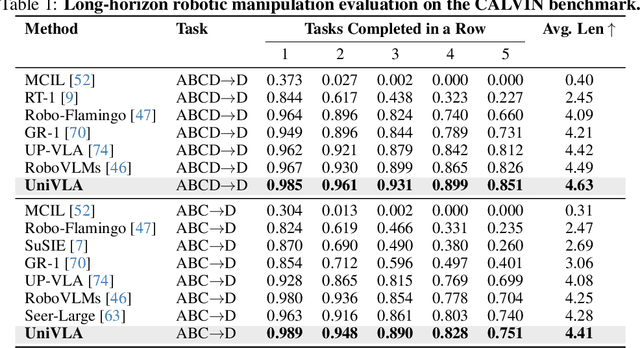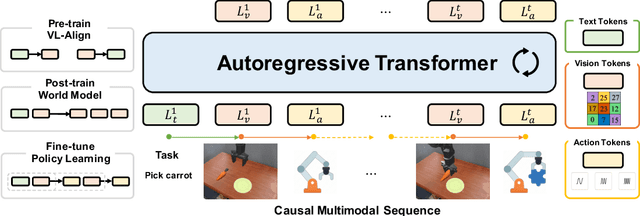Wenxuan Wang
Curing Miracle Steps in LLM Mathematical Reasoning with Rubric Rewards
Oct 09, 2025Abstract:Large language models for mathematical reasoning are typically trained with outcome-based rewards, which credit only the final answer. In our experiments, we observe that this paradigm is highly susceptible to reward hacking, leading to a substantial overestimation of a model's reasoning ability. This is evidenced by a high incidence of false positives - solutions that reach the correct final answer through an unsound reasoning process. Through a systematic analysis with human verification, we establish a taxonomy of these failure modes, identifying patterns like Miracle Steps - abrupt jumps to a correct output without a valid preceding derivation. Probing experiments suggest a strong association between these Miracle Steps and memorization, where the model appears to recall the answer directly rather than deriving it. To mitigate this systemic issue, we introduce the Rubric Reward Model (RRM), a process-oriented reward function that evaluates the entire reasoning trajectory against problem-specific rubrics. The generative RRM provides fine-grained, calibrated rewards (0-1) that explicitly penalize logical flaws and encourage rigorous deduction. When integrated into a reinforcement learning pipeline, RRM-based training consistently outperforms outcome-only supervision across four math benchmarks. Notably, it boosts Verified Pass@1024 on AIME2024 from 26.7% to 62.6% and reduces the incidence of Miracle Steps by 71%. Our work demonstrates that rewarding the solution process is crucial for building models that are not only more accurate but also more reliable.
DRQA: Dynamic Reasoning Quota Allocation for Controlling Overthinking in Reasoning Large Language Models
Aug 25, 2025Abstract:Reasoning large language models (RLLMs), such as OpenAI-O3 and DeepSeek-R1, have recently demonstrated remarkable capabilities by performing structured and multi-step reasoning. However, recent studies reveal that RLLMs often suffer from overthinking, i.e., producing unnecessarily lengthy reasoning chains even for simple questions, leading to excessive token consumption and computational inefficiency. Interestingly, we observe that when processing multiple questions in batch mode, RLLMs exhibit more resource-efficient behavior by dynamically compressing reasoning steps for easier problems, due to implicit resource competition. Inspired by this, we propose Dynamic Reasoning Quota Allocation (DRQA), a novel method that transfers the benefits of resource competition from batch processing to single-question inference. Specifically, DRQA leverages batch-generated preference data and reinforcement learning to train the model to allocate reasoning resources adaptively. By encouraging the model to internalize a preference for responses that are both accurate and concise, DRQA enables it to generate concise answers for simple questions while retaining sufficient reasoning depth for more challenging ones. Extensive experiments on a wide range of mathematical and scientific reasoning benchmarks demonstrate that DRQA significantly reduces token usage while maintaining, and in many cases improving, answer accuracy. By effectively mitigating the overthinking problem, DRQA offers a promising direction for more efficient and scalable deployment of RLLMs, and we hope it inspires further exploration into fine-grained control of reasoning behaviors.
Medical Reasoning in the Era of LLMs: A Systematic Review of Enhancement Techniques and Applications
Aug 01, 2025Abstract:The proliferation of Large Language Models (LLMs) in medicine has enabled impressive capabilities, yet a critical gap remains in their ability to perform systematic, transparent, and verifiable reasoning, a cornerstone of clinical practice. This has catalyzed a shift from single-step answer generation to the development of LLMs explicitly designed for medical reasoning. This paper provides the first systematic review of this emerging field. We propose a taxonomy of reasoning enhancement techniques, categorized into training-time strategies (e.g., supervised fine-tuning, reinforcement learning) and test-time mechanisms (e.g., prompt engineering, multi-agent systems). We analyze how these techniques are applied across different data modalities (text, image, code) and in key clinical applications such as diagnosis, education, and treatment planning. Furthermore, we survey the evolution of evaluation benchmarks from simple accuracy metrics to sophisticated assessments of reasoning quality and visual interpretability. Based on an analysis of 60 seminal studies from 2022-2025, we conclude by identifying critical challenges, including the faithfulness-plausibility gap and the need for native multimodal reasoning, and outlining future directions toward building efficient, robust, and sociotechnically responsible medical AI.
3D Software Synthesis Guided by Constraint-Expressive Intermediate Representation
Jul 24, 2025Abstract:Graphical user interface (UI) software has undergone a fundamental transformation from traditional two-dimensional (2D) desktop/web/mobile interfaces to spatial three-dimensional (3D) environments. While existing work has made remarkable success in automated 2D software generation, such as HTML/CSS and mobile app interface code synthesis, the generation of 3D software still remains under-explored. Current methods for 3D software generation usually generate the 3D environments as a whole and cannot modify or control specific elements in the software. Furthermore, these methods struggle to handle the complex spatial and semantic constraints inherent in the real world. To address the challenges, we present Scenethesis, a novel requirement-sensitive 3D software synthesis approach that maintains formal traceability between user specifications and generated 3D software. Scenethesis is built upon ScenethesisLang, a domain-specific language that serves as a granular constraint-aware intermediate representation (IR) to bridge natural language requirements and executable 3D software. It serves both as a comprehensive scene description language enabling fine-grained modification of 3D software elements and as a formal constraint-expressive specification language capable of expressing complex spatial constraints. By decomposing 3D software synthesis into stages operating on ScenethesisLang, Scenethesis enables independent verification, targeted modification, and systematic constraint satisfaction. Our evaluation demonstrates that Scenethesis accurately captures over 80% of user requirements and satisfies more than 90% of hard constraints while handling over 100 constraints simultaneously. Furthermore, Scenethesis achieves a 42.8% improvement in BLIP-2 visual evaluation scores compared to the state-of-the-art method.
POLYCHARTQA: Benchmarking Large Vision-Language Models with Multilingual Chart Question Answering
Jul 16, 2025Abstract:Charts are a universally adopted medium for interpreting and communicating data. However, existing chart understanding benchmarks are predominantly English-centric, limiting their accessibility and applicability to global audiences. In this paper, we present PolyChartQA, the first large-scale multilingual chart question answering benchmark covering 22,606 charts and 26,151 question-answering pairs across 10 diverse languages. PolyChartQA is built using a decoupled pipeline that separates chart data from rendering code, allowing multilingual charts to be flexibly generated by simply translating the data and reusing the code. We leverage state-of-the-art LLM-based translation and enforce rigorous quality control in the pipeline to ensure the linguistic and semantic consistency of the generated multilingual charts. PolyChartQA facilitates systematic evaluation of multilingual chart understanding. Experiments on both open- and closed-source large vision-language models reveal a significant performance gap between English and other languages, especially low-resource ones with non-Latin scripts. This benchmark lays a foundation for advancing globally inclusive vision-language models.
A Survey of Deep Learning for Geometry Problem Solving
Jul 16, 2025Abstract:Geometry problem solving is a key area of mathematical reasoning, which is widely involved in many important fields such as education, mathematical ability assessment of artificial intelligence, and multimodal ability assessment. In recent years, the rapid development of deep learning technology, especially the rise of multimodal large language models, has triggered a widespread research boom. This paper provides a survey of the applications of deep learning in geometry problem solving, including (i) a comprehensive summary of the relevant tasks in geometry problem solving; (ii) a thorough review of related deep learning methods; (iii) a detailed analysis of evaluation metrics and methods; and (iv) a critical discussion of the current challenges and future directions that can be explored. Our goal is to provide a comprehensive and practical reference of deep learning for geometry problem solving to promote further developments in this field. We create a continuously updated list of papers on GitHub: https://github.com/majianz/dl4gps.
Unified Vision-Language-Action Model
Jun 24, 2025



Abstract:Vision-language-action models (VLAs) have garnered significant attention for their potential in advancing robotic manipulation. However, previous approaches predominantly rely on the general comprehension capabilities of vision-language models (VLMs) to generate action signals, often overlooking the rich temporal and causal structure embedded in visual observations. In this paper, we present UniVLA, a unified and native multimodal VLA model that autoregressively models vision, language, and action signals as discrete token sequences. This formulation enables flexible multimodal tasks learning, particularly from large-scale video data. By incorporating world modeling during post-training, UniVLA captures causal dynamics from videos, facilitating effective transfer to downstream policy learning--especially for long-horizon tasks. Our approach sets new state-of-the-art results across several widely used simulation benchmarks, including CALVIN, LIBERO, and Simplenv-Bridge, significantly surpassing previous methods. For example, UniVLA achieves 95.5% average success rate on LIBERO benchmark, surpassing pi0-FAST's 85.5%. We further demonstrate its broad applicability on real-world ALOHA manipulation and autonomous driving.
SoK: Evaluating Jailbreak Guardrails for Large Language Models
Jun 12, 2025



Abstract:Large Language Models (LLMs) have achieved remarkable progress, but their deployment has exposed critical vulnerabilities, particularly to jailbreak attacks that circumvent safety mechanisms. Guardrails--external defense mechanisms that monitor and control LLM interaction--have emerged as a promising solution. However, the current landscape of LLM guardrails is fragmented, lacking a unified taxonomy and comprehensive evaluation framework. In this Systematization of Knowledge (SoK) paper, we present the first holistic analysis of jailbreak guardrails for LLMs. We propose a novel, multi-dimensional taxonomy that categorizes guardrails along six key dimensions, and introduce a Security-Efficiency-Utility evaluation framework to assess their practical effectiveness. Through extensive analysis and experiments, we identify the strengths and limitations of existing guardrail approaches, explore their universality across attack types, and provide insights into optimizing defense combinations. Our work offers a structured foundation for future research and development, aiming to guide the principled advancement and deployment of robust LLM guardrails. The code is available at https://github.com/xunguangwang/SoK4JailbreakGuardrails.
IntentionESC: An Intention-Centered Framework for Enhancing Emotional Support in Dialogue Systems
Jun 06, 2025Abstract:In emotional support conversations, unclear intentions can lead supporters to employ inappropriate strategies, inadvertently imposing their expectations or solutions on the seeker. Clearly defined intentions are essential for guiding both the supporter's motivations and the overall emotional support process. In this paper, we propose the Intention-centered Emotional Support Conversation (IntentionESC) framework, which defines the possible intentions of supporters in emotional support conversations, identifies key emotional state aspects for inferring these intentions, and maps them to appropriate support strategies. While Large Language Models (LLMs) excel in text generating, they fundamentally operate as probabilistic models trained on extensive datasets, lacking a true understanding of human thought processes and intentions. To address this limitation, we introduce the Intention Centric Chain-of-Thought (ICECoT) mechanism. ICECoT enables LLMs to mimic human reasoning by analyzing emotional states, inferring intentions, and selecting suitable support strategies, thereby generating more effective emotional support responses. To train the model with ICECoT and integrate expert knowledge, we design an automated annotation pipeline that produces high-quality training data. Furthermore, we develop a comprehensive evaluation scheme to assess emotional support efficacy and conduct extensive experiments to validate our framework. Our data and code are available at https://github.com/43zxj/IntentionESC_ICECoT.
Enhanced DACER Algorithm with High Diffusion Efficiency
May 29, 2025Abstract:Due to their expressive capacity, diffusion models have shown great promise in offline RL and imitation learning. Diffusion Actor-Critic with Entropy Regulator (DACER) extended this capability to online RL by using the reverse diffusion process as a policy approximator, trained end-to-end with policy gradient methods, achieving strong performance. However, this comes at the cost of requiring many diffusion steps, which significantly hampers training efficiency, while directly reducing the steps leads to noticeable performance degradation. Critically, the lack of inference efficiency becomes a significant bottleneck for applying diffusion policies in real-time online RL settings. To improve training and inference efficiency while maintaining or even enhancing performance, we propose a Q-gradient field objective as an auxiliary optimization target to guide the denoising process at each diffusion step. Nonetheless, we observe that the independence of the Q-gradient field from the diffusion time step negatively impacts the performance of the diffusion policy. To address this, we introduce a temporal weighting mechanism that enables the model to efficiently eliminate large-scale noise in the early stages and refine actions in the later stages. Experimental results on MuJoCo benchmarks and several multimodal tasks demonstrate that the DACER2 algorithm achieves state-of-the-art performance in most MuJoCo control tasks with only five diffusion steps, while also exhibiting stronger multimodality compared to DACER.
 Add to Chrome
Add to Chrome Add to Firefox
Add to Firefox Add to Edge
Add to Edge